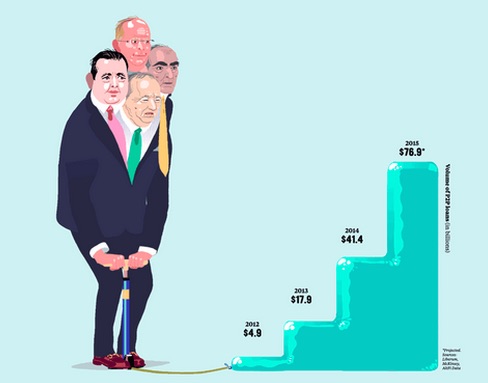P2P lending is hot. Just ask Shanghai Duolun Industry, a Chinese real estate company that decided late last month it wanted to become a P2P lender instead. Last Monday, Shanghai Duolun officially became P2P Financial Information Service Co., and just like that, without ever having facilitated a single micro loan (or doing anything at all to set up the business for that matter) the company’s stock traded limit up in China.Â
Meanwhile, in the US, Wall Street is itching to bring P2P loan-backed paper to the ABS market. As we wrote in “What Bubble? Wall Street To Turn P2P Loans Into CDOsâ€, the global hunt for yield makes the 7% return on P2P loans look very attractive, and where there’s demand, Wall Street will figure out a way to provide the supply, in this case by securitizing loans made by companies like LendingClub. If you’re curious to know just how big the market for that paper could become, consider the following from Bloomberg:
Is peer-to-peer lending out of control?
There’s certainly some cause for concern. Consider these facts: P2P loan volume is poised to hit $77 billion this year, a 15-fold increase from just three years ago. LendingClub, the No. 1 player worldwide, is trading at a market value of about $7 billion even though it lost $33 million last year. And in a flashback to the subprime mortgage boom, P2P startups have begun bundling and selling off loans through securitizations.
Â
And now Wall Street is cranking up the volume by running these loans through its securitization machine. In November, Morgan Stanley (MS) and Goldman (GS) led the sale of securities backed by $303 million in student loans originated by SoFi. In February, BlackRock (BLK) unveiled the first investment-grade-rated package of P2P consumer loans with a $281 million offering of notes from Prosper Marketplace, a site that lets users apply for loans as well as back them.
Such deals will help P2P platforms spread risk and multiply loan volume, which isn’t necessarily a bad thing. Growth is good, right? Still, the specter of the subprime-mortgage bust looms over this nascent market.


